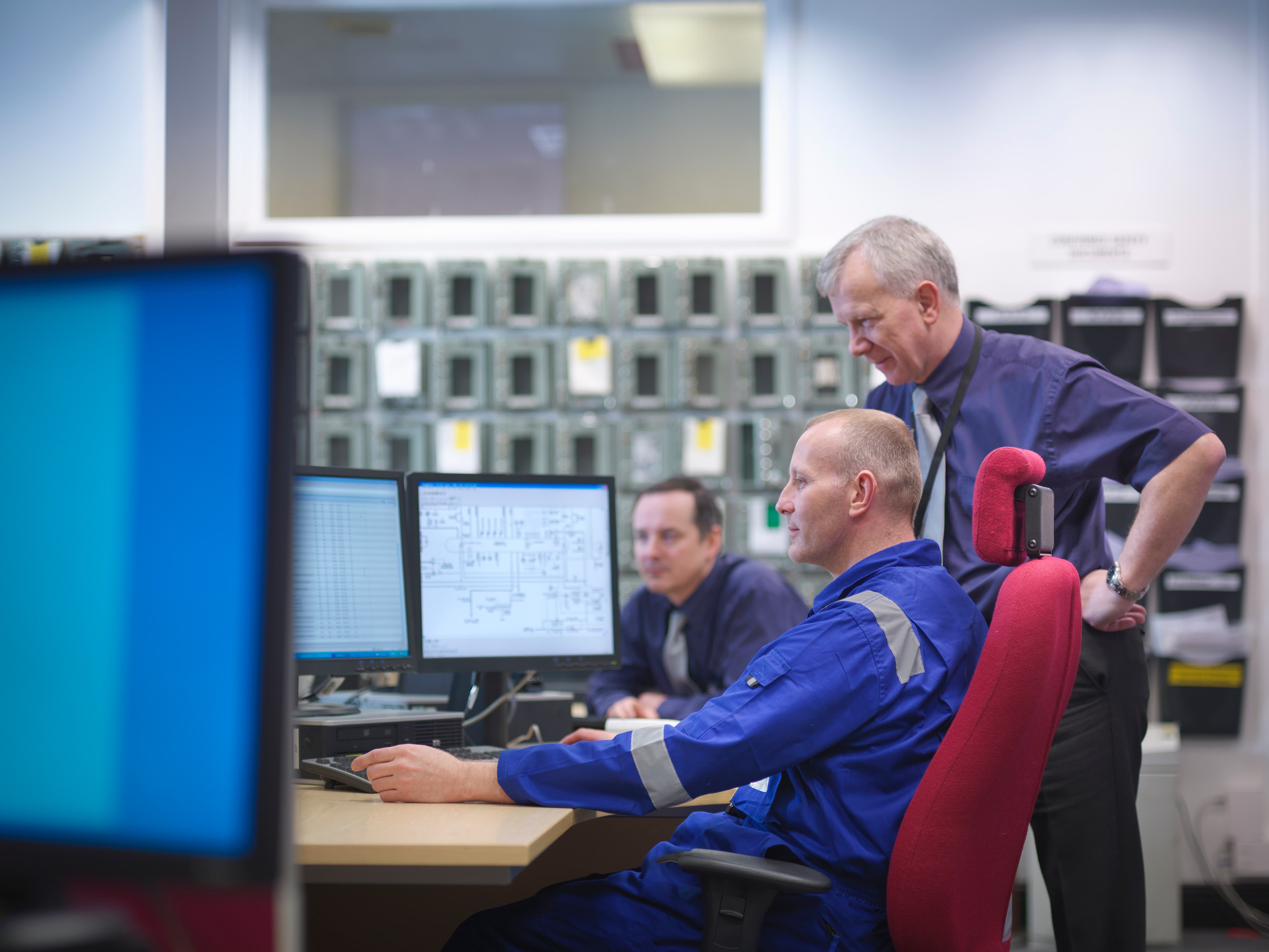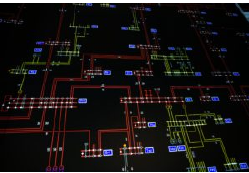Simulation-based pipeline operator training
In this blog post, Mark Bolze explains the value of simulation-based pipeline operator training and how it better prepares pipeline operators for real-world scenarios.
Mark, who is based in our Mechanicsburg, Pennsylvania office, is a Principal Simulation and Optimization Engineer with DNV – Digital Solutions’ Consulting Simulation & Optimization team. He has extensive experience in implementing model-based solutions for DNV’s clients, including Synergi Pipeline Simulator – Trainer solutions.
Preparing pipeline operators for rapidly evolving change
Change. The oil and gas industry is dealing with unprecedented levels of change. From decarbonization-based policy change to pandemic related internal workplace change as well as external end-user consumption change to change prompted by the success of fracking — much is changing! Add to that the desire for continuous improvement in the safe and reliable operation of hazardous liquid/gas systems along with an aging/re-organizing control room workforce and it is easy to see the value of Simulation-Based Pipeline Operator Training.

Just as pilots are trained on simulators so too “pilots” of pipelines can also be trained on simulators. The value of simulation-based training is that it can expose the operator to realistic pipeline conditions and behaviors that occur during standard operating conditions as well as during abnormal operating conditions and even future operating conditions!
For a natural gas system, a simulation-based trainer can be connected to a copy of the SCADA system for a fully simulated operating environment. During a typical training session, the pipeline operator can sit down and become comfortable with a typical operating day, when nine minutes into the training session a 4-inch leak on a 350 PSIG natural gas feeder line can be triggered. The operator would see the event happen on their SCADA displays – seeing rate of change alarms trigger (if they would trigger) and pressures trending down – starting first near the leak location and then moving away from that location as the line unpacks. The operator would “experience” and react to an abnormal operating condition well in advance of ever actually having to experience and react to a real leak.
For a liquid pipeline, a simulation-based trainer linked to a “training” copy of a SCADA system can be used to simulate the process of the potentially challenging action of bringing up a pipeline from a shutdown state. Starting up a pipeline, in reality, can be stressful not only on the operator bringing the line-up, but also on the equipment in the field. An inexperienced operator or one that is operating new facilities for the first time on a familiar line may make costly mistakes on the real system. Using a simulator allows for a practice-makes-perfect mentality and increased familiarity over the behavior of a pipeline system. Starting from slack conditions, the operator could first start the pumps at the initial station on the line. And then, conscious of the hydraulics of the system, learn when to start the pumps at the next station so that suction pressure at the second station is not violated (if that station were started too early before the first station pressurizes the line) and so that the discharge pressure of the first station is not violated (which could happen if the second station is started too late), or avoiding pumps tripping offline caused by abnormal conditions. In this case, the operator would learn operating procedures under “normal” operating conditions.
What about all of that “Change”? In recent years the success of fracking has led to the alteration of normal ways of operating pipelines. New sources of product have come online at different locations. And, in recent years the changing regulatory climate has changed the availability of transportation resources through delayed approval of new lines or the shut-down of existing lines. And, most recently, the pandemic has altered consumption patterns and added to a recent trend that has reduced the demand for some refined products. All of this “Change” has meant that many pipeline operators have to re-optimize the operation of their systems. The systems cannot be run using the existing “recipe” of documented operating procedures.
The benefits of simulation-based operator training
 A simulation-based trainer is extremely helpful to the process of managing these operational changes. Through simulation-based training, operators can learn new ways of operating existing pipelines before they actually have to operate the pipeline in that way. And, through simulation-based training operators can also learn to operate the future configuration of a pipeline before that configuration goes into service.
A simulation-based trainer is extremely helpful to the process of managing these operational changes. Through simulation-based training, operators can learn new ways of operating existing pipelines before they actually have to operate the pipeline in that way. And, through simulation-based training operators can also learn to operate the future configuration of a pipeline before that configuration goes into service.
After each training session, a good bit of post-event analysis can take place. As fighter pilots may sit down to a session debrief after a simulated mission, the operators and control room instructor can sit down and review a training session in detail. From reviewing the actions taken to focusing on the hydraulic chain of events along the whole pipeline, the operator gains a thorough understanding of the pipeline and pipeline hydraulics by this in-depth review. All of this happens without a drop of spilt oil or Thousand Cubic Feet per Hour (MCFH) lost to the atmosphere!
DNV’s consulting engineers can testify to the fact that simulation-based study of a hydraulic network can produce a significant hydraulic understanding of the network for someone who has never worked with the system. Through simulation, people unfamiliar with the hydraulics of a specific network can quickly come up to speed with the capabilities of the system.
A mature simulation-based training system can also be expanded to be used to look at “what-ifs” and planning needs. Operators can be encouraged to use the system to manage nominations differently. Operators can experiment with different levels of line “packing” to see how the system will behave during the morning peak or to gain operational confidence prior to upcoming outage events. Any number of “what-if” scenarios can be created and run with the system.
The same system can also be used to train on past events – allowing for the recreation of those conditions and events to support a more detailed investigation into the operator actions taken during such an abnormal situation. Also, the system can be used to test different responses to that event to see how different actions may have resulted in different outcomes. From estimating oil lost, to an actual spill, to how to mitigate the loss of a major compressor station, a simulation-based trainer gives the operating team a powerful tool in their arsenal.
Approaches to simulation-based training environments
Implementation of a simulation-based training environment can take many forms. One approach is to create a mock-up of the relevant SCADA screens and to hook these screens to the simulation environment.
A more common approach today is to obtain a “training” copy of the SCADA system and to link up existing SCADA displays to the simulation tool such that the simulator “becomes the pipeline” as far as the operator is concerned. Either training environment provides increased comfort with the hydraulic performance of the system. The SCADA-interfaced environment has the benefit of providing the operator with the same “look and feel” of the cockpit when using the simulator.
Simulation-based training equips operators to handle abnormal operating conditions
On January 15, 2009 U.S. Airways Flight 1549 was involved in a normal departure from New York City’s LaGuardia Airport. What was thought to be a normal “every day” happening quickly turned into an abnormal/emergency event when both engines were lost due to bird strikes. The experienced pilot was called upon to apply all of his training to react to the situation and safely landed the plane in the Hudson instead of trying to glide back to the airport. Training is what prepares pilots for the unexpected/abnormal events they encounter. Simulation-based operator training is a tool that can give pipeline operators the breadth of pre-exposure to new and abnormal operating conditions that allows them to be equipped to handle the Change associated with the rapidly evolving conditions of our day.
If you would like to find out more about DNV’s simulation-based pipeline operator training solutions, please do not hesitate to contact us.
Author: Mark Bolze
2/9/2021 12:58:38 PM
